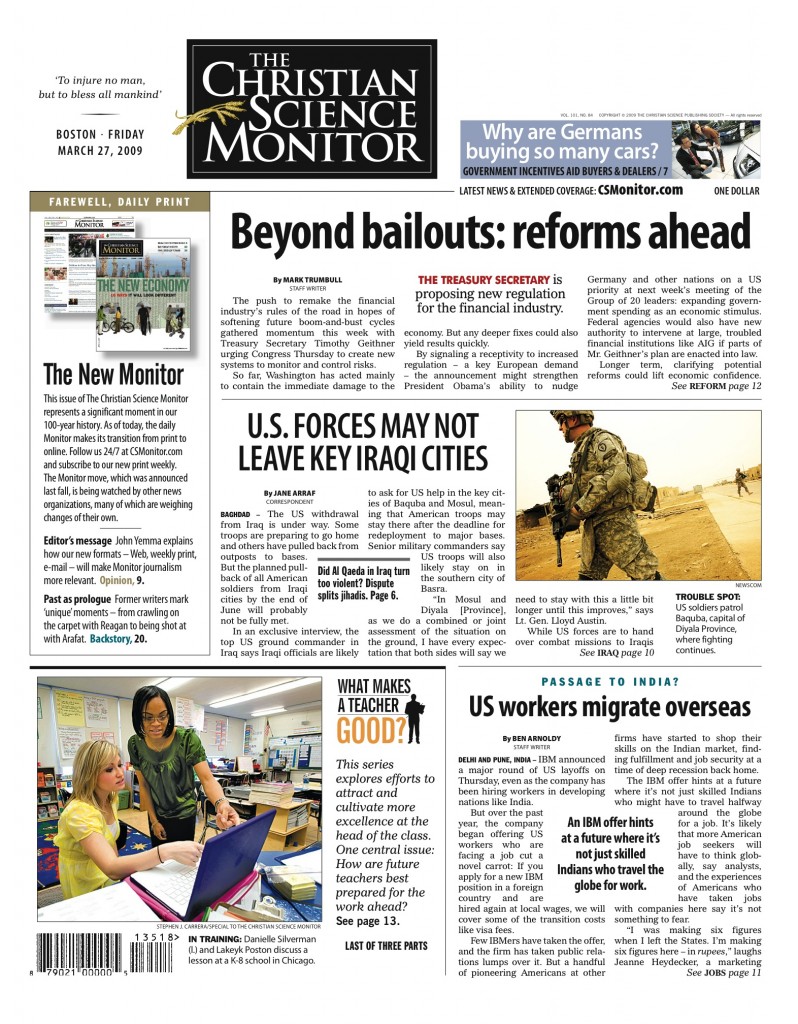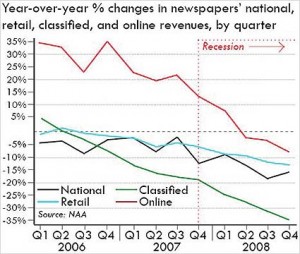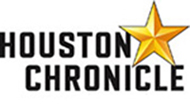Spain’s El Mundo newspaper has an article about the Death Watch that has received some notice in the Spanish speaking world, including Cuba and Argentina. We wish our Spanish was better, but we think they’re mostly saying the same thing.
 We thought you might like to see the text of the e-mail interview with El Mundo correspondent Carlos Fresneda that formed the basis of this story. As always, your comments are welcome.
We thought you might like to see the text of the e-mail interview with El Mundo correspondent Carlos Fresneda that formed the basis of this story. As always, your comments are welcome.
How do you feel when you read about events such as the end of the Rocky Moutain News? Which newspapers will survive in the US?
The closure of the Rocky Mountain News left me feeling sick because we are seeing institutions of knowledge collapse before our eyes. The vital public service that these newspapers provide is being lost and, for the moment, there is nothing to replace them.
I believe a few national dailies will survive, among them The New York Times, USA Today, The Washington Post and The Wall Street Journal. These papers made the transition to national distribution a decade ago and that will serve them will. The need for newspapers will not disappear, but the economic model of regional dailies is no longer sustainable. Papers that do not count their national circulations in the one million range will not be able to command the advertising fees to keep them alive. However, there will be a place for some print properties and a few will remain to fulfill that need.
Do you think that something like this could happen in Europe?
 It depends on the location. Areas of Europe that are well wired for the Internet and have robust wireless infrastructures, like the Nordic region, will probably see the need for newspapers decline more quickly than those that charge high fees for Internet access or do not have affluent populations. Eastern Europe, in contrast, will probably be a fairly robust market for newspapers for some time. Some cultures are also more invested in the newspaper model, as is the case in the UK. In general, Europe will discard print newspapers more slowly than the US because traditions are more embedded and, in some cases, government subsidies will keep print publications afloat. France is an example of that.
It depends on the location. Areas of Europe that are well wired for the Internet and have robust wireless infrastructures, like the Nordic region, will probably see the need for newspapers decline more quickly than those that charge high fees for Internet access or do not have affluent populations. Eastern Europe, in contrast, will probably be a fairly robust market for newspapers for some time. Some cultures are also more invested in the newspaper model, as is the case in the UK. In general, Europe will discard print newspapers more slowly than the US because traditions are more embedded and, in some cases, government subsidies will keep print publications afloat. France is an example of that.
Will more newspapers follow The Wall Street Journal model and charge for their content on the Web?
They will try but mostly they will fail. Readers aren’t accustomed to paying the costs of news, even in the print model, where the cost of a newspaper to a reader is trivial compared to the cost of producing it. Newspapers may be able to generate some revenue from subscription fees but not enough to support their operations at their current size.
Will “micropayments” be the solution for some of them?
The only way a micropayment model can flourish is if there is a broad-based campaign by journalists, public officials and celebrities to promote it. This is the model that is creating a viable paid-content model in the recording industry. There must be a public education campaign to convince the public that a vital information source is threatened and that it must be supported. Perhaps these organizations can steal a lesson from the music industry by giving away their content free on their website but charging for downloads to a Kindle. If readers perceive the value, they’ll pay. However, I think it’s unlikely that the news industry can muster enough support to make such a campaign successful.
The new generations of reader is used to getting information for free. Will these people be willing to pay for high quality journalism?
There will be public funding models like National Public Radio’s that will have some success applying public support to worthy news organizations. However, I doubt that individual readers will be willing to pay enough to cover more than a small amount of the operating costs of conventional newspapers. A few organizations may survive on public funding and philanthropy, but the vast majority of daily newspapers will not be able to sustain themselves under that model.
What will happen to investigative journalism?
In the short term, a lot of investigative journalism will disappear. However, I believe a new style will emerge over time that leverages increased public access to government documents and the work of individual “whistle blowers” to fulfill many of the same objectives of investigative journalism. New-journalism organizations like Talking Points Memo actually recruit their readers to assist in the reporting process by scouring public documents and fact-checking information. In a world in which everyone is a publisher, some new models of investigative journalism will emerge that harness the work of individual citizens.
Will the new model of journalism using reader-generated content reach the same quality and level that “old school” journalism?
It won’t have the finish and polish of professional journalism and it won’t be nearly as well packaged, but the new model could be richer in many ways because so many people will be involved in the “reporting” process. There will also be new aggregators emerging online that gather the work of citizen journalists and package it professionally.
What is the future of the journalist? Will we be mostly self-employed and will the lack of funds eventually affect the quality of our work?
Journalists will need to think more about their personal brand than the brand of the publication they work for. Many more of them will be freelancers in the future, but they can still make a good living by selling their services to various outlets and by publishing in multiple media. They will need to be more specialized in focus but more generalized in terms of the media they use (text, audio, photo, video).
What is the future of weekly and monthly magazines?
That depends greatly on the audience. Computer displays can’t match the visual quality of a printed page and will never match the tactile quality. Magazines that deliver high visual quality to discerning audiences – high-end travel and lifestyle publications, for example – may do very well for a long time. Those that mainly deliver news will be under more pressure. Magazines with large newsstand circulations will probably do better than those that deliver principally through the mail because people are accustomed to reading them when out of the home. However, mobile news services may blunt much of this advantage over time. I think Brides magazine has a long life in print ahead of it. I’m not sure The Economist does.
the tactile quality. Magazines that deliver high visual quality to discerning audiences – high-end travel and lifestyle publications, for example – may do very well for a long time. Those that mainly deliver news will be under more pressure. Magazines with large newsstand circulations will probably do better than those that deliver principally through the mail because people are accustomed to reading them when out of the home. However, mobile news services may blunt much of this advantage over time. I think Brides magazine has a long life in print ahead of it. I’m not sure The Economist does.
Should we blame publishers for the current crisis in the same way US car makers are being blamed for not seeing their problem coming?
Journalists aren’t responsible for this crisis. The business executives who failed to understand changes in their audiences that were apparent a decade ago deserve most of the blame. They considered the Internet to be simply another distribution medium for their printed products and they failed to adapt their services for the unique characteristics of the Web. They also failed to adjust their sales models to target small and local businesses. They placed their bets on classified and department store advertising, and as those revenue sources were taken away or went out of business, they had nothing to fall back upon. Even more damaging was the consolidation spree of the last 10 years that plunged many publishers into heavy debt. Most of them will never recover. The burden of debt service handcuffs them from making meaningful change in their business.



 The Houston Chronicle joins the long string of newspapers that assert their commitment to “strong watchdog journalism” while covering news of their own troubles with e.e. cummings-like simplicity. The newspaper devotes just 208 words to news that it is laying off 12% of its staff, or nearly 200 people. That’s about one word per victim. In fact, the Chronicle doesn’t even mention a body count. You have to
The Houston Chronicle joins the long string of newspapers that assert their commitment to “strong watchdog journalism” while covering news of their own troubles with e.e. cummings-like simplicity. The newspaper devotes just 208 words to news that it is laying off 12% of its staff, or nearly 200 people. That’s about one word per victim. In fact, the Chronicle doesn’t even mention a body count. You have to 









 It depends on the location. Areas of Europe that are well wired for the Internet and have robust wireless infrastructures, like the Nordic region, will probably see the need for newspapers decline more quickly than those that charge high fees for Internet access or do not have affluent populations. Eastern Europe, in contrast, will probably be a fairly robust market for newspapers for some time. Some cultures are also more invested in the newspaper model, as is the case in the UK. In general, Europe will discard print newspapers more slowly than the US because traditions are more embedded and, in some cases, government subsidies will keep print publications afloat. France is an example of that.
It depends on the location. Areas of Europe that are well wired for the Internet and have robust wireless infrastructures, like the Nordic region, will probably see the need for newspapers decline more quickly than those that charge high fees for Internet access or do not have affluent populations. Eastern Europe, in contrast, will probably be a fairly robust market for newspapers for some time. Some cultures are also more invested in the newspaper model, as is the case in the UK. In general, Europe will discard print newspapers more slowly than the US because traditions are more embedded and, in some cases, government subsidies will keep print publications afloat. France is an example of that.


